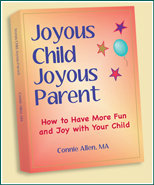Recently in Ohio, another tragic high school shooting occurred, and the unhappy, struggling 17-year-old who did the killing will likely be tried as an adult. So many young lives cut short including the shooter’s. Everyone is in pain. An entire community feels the loss.
Prosecutors tend to demonize the perpetrators of school shootings in the mistaken belief that these are “bad” kids and that punishing this young person will prevent further shootings. The rationale is the perpetrator committed an adult act and so he must pay as an adult. But who made the gun available to him and modeled using it?
We talk about holding these young people accountable for their actions, but who is going to hold accountable his peers who rejected him, the school officials who created an emotionally painful environment and who neglected to recognize this young man’s struggle and to do something effective about it? Where was his family? Who is going to hold these people accountable for their part?
Most school professionals sincerely try to do their best for the young people in their care. Yet they are also pressured by the hierarchy above them and an educational system based on conformity, not nurturing the emotional needs of children.
Young people who commit these acts struggle painfully with confusing emotions and problems, because of which they can see no other way to resolve their distress. They feel out of control emotionally and disconnected with their family, teachers and peers.
A little known fact is that most school shooters were on anti-depressant drugs, which have a documented history of producing violent and aggressive acts. Will we ever know if T J was taking prescribed psychiatric medication?
If we are to end these violent acts, we must look through the eyes of the perpetrator, beyond punishing him, and explore and discover effective ways to prevent and heal children’s emotional pain.
Looking deeper, the young people who commit violent acts reflect the emotional distress, loneliness, and pressure all students experience in our schools, whether they are academically and socially successful or not. School is a high-pressure institution for our young people, one that isolates them from their peers, their parents and teachers and that demands they conform to the expected standards of achievement.
Even the so-called successful ones who appear to be okay on the surface feel the same things, sometimes more so because more is expected of them. Young people who commit violent acts against others and themselves are like the canary in the mine, indicators of what is happening for all.
Our Western culture values academic, professional, and financial success as our highest measure of accomplishment, even at the price of our inner happiness and peace and loving connection with the precious people in our lives.
Today, as you interact with your child, look to see how he is doing emotionally before you make demands on him.
Is she relaxed and happy?
Has he had a good day and is he sharing it with you?
Is there something else she needs right now – perhaps from you – more than to complete her homework? Does he need some down time by himself to regroup?
The opportunity to learn academic information will always be there. This moment for your child and with your child will never come again. Make it one that nurtures you both!
What are you going to do differently today? I’d love for you to share it with me and other readers by commenting below.




 Just a little bit about me -- I'm a coach for parents, visionary guide, insightful trainer, and powerful consultant.
Just a little bit about me -- I'm a coach for parents, visionary guide, insightful trainer, and powerful consultant.